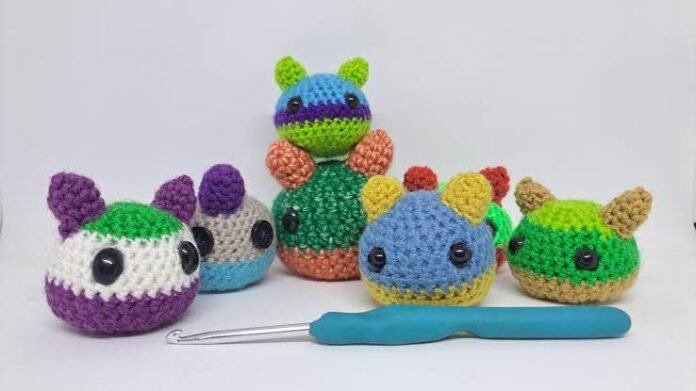Last Updated on August 10, 2025 by Rida Gul
Table of Contents
Why Crochet Patterns Are So Demanding for Housewives
Crochet has seen a major resurgence in popularity over the last few years. The timeless craft has been passed down through generations and provides an enjoyable creative outlet for all ages. From baby blankets to winter accessories, crocheted items make wonderful handmade gifts. However, the intricate process of following crochet patterns can be demanding for busy housewives. Here are some reasons why amigurumi crochet patterns prove challenging for the modern homemaker.
The Complexity of Patterns
One of the main reasons crochet patterns are so demanding is their complexity. Especially for beginners, crochet patterns can seem like another language altogether. The detailed instructions contain quite a bit of specialized terminology and abbreviations. For example, common abbreviations include ch for chain, dc for double crochet, and st(s) for stitch(es). In addition, patterns dictate the exact sequence of stitches and stitches per row. The level of specificity in crochet patterns means crafters must follow along meticulously. Even experienced crocheters can get tripped up by confusing phrasing in patterns.
The Time Commitment
Along with the mental focus required, crochet projects also involve a major time commitment. From start to finish, a single crochet pattern can take days, weeks, or even months to fully complete. Larger and more intricate blanket and garment patterns especially eat up hours upon hours. The steady hands, concentration, and dedication needed to stick with a long-term crochet project can be draining over time. This makes it hard for busy homemakers to find extended blocks of free time for crochet.
The Pressure for Perfection
Most crocheters feel immense pressure to perfectly replicate what they see in a pattern. When each row and stitch must be uniform, there is very little room for error. Ripping out rows to redo sections is an inevitable part of the crochet process when mistakes are made. However, having to repeatedly undo work can be discouraging and only adds to the time investment. Crocheters striving for flawless finished products often get caught up obsessing over even the smallest of mistakes. For housewives with other responsibilities beyond crochet, perfectionism can hinder enjoyment of the hobby.
The Cost of Supplies
Let’s not forget the hefty cost that comes with crochet as a hobby. From yarn and hooks to pattern books, the required supplies really add up. Yarn is typically the most expensive component. Certain projects call for specific materials like wool, cotton, or luxurious cashmere which don’t come cheap. Even acrylic yarn costs more for the sheer quantity needed to complete a large blanket or sweater.For housewives sticking to a strict budget, the ongoing expense of supplies poses a challenge. However, you can check out Mary Maxim for a complete collection of clearance yarn for sale, as well as crochet patterns and other goodies on sale.
Limited Storage Space
Speaking of supplies, dedicated crocheters need ample space to stash their yarn stash and tools. Organizing and storing all these materials is no easy feat in a crowded home. Overflowing baskets and tubs of yarn can take up valuable real estate very quickly. Not to mention WIPs (works-in-progress) pile up when juggling multiple crochet projects. Without sufficient storage options, crochet clutter can feel overwhelming in small living spaces.
The Temptation of New Patterns
For most crocheters, the desire to take on new patterns seems endless. It’s incredibly tempting to stock up on books, download patterns online, and continuously expand scope. Having unlimited pattern options available is both a blessing and a curse. Too many patterns can lead to starting many projects that never get finished, just like temptation to get ready a new crochet flower bouquet. Jumping from pattern to pattern also prevents crocheters from mastering specific techniques. It’s key for housewives to narrow down pattern choices and restrain the collection to only those they absolutely love.
Physical Aches and Pains
Let’s not underestimate the physical toll of crocheting. The repetitive hand motions and postures required can aggravate joints for some. Extended periods of crocheting can also trigger aches in necks, shoulders, backs, and wrists. Cramping hands and sore spots definitely diminish enjoyment of the process. Housewives coping with arthritis, carpal tunnel, and other conditions may find crochet unsustainable without taking proper ergonomic precautions.
Lack of Portability
Unlike knitting, crocheting is generally less conducive to portability. Knit projects are easily transported via knitting needles and a ball of yarn. However, the bulkier hooks and other notions for crochet make on-the-go work more difficult. Short car rides or waiting rooms may present an opportunity for a few knit stitches, while crocheters prefer a stable surface. Sitting in one place for hours on end to progress through complex crochet patterns is not always plausible. Mothers and housewives often lack the flexibility to crochet at leisure.
Conclusion
Crochet’s popularity shows no signs of waning, which speaks volumes about its universal, lasting appeal. However, housewives looking to pick up this craft should enter with eyes wide open. The concentration, finesse, and time crochet requires makes it considerably demanding. Still, homemakers who approach crochet with patience, organization, and reasonable expectations will find the craft well worth pursuing. With practice, crocheters gain speed, skill, and satisfaction from transforming basic yarn into beautiful works of art.


























